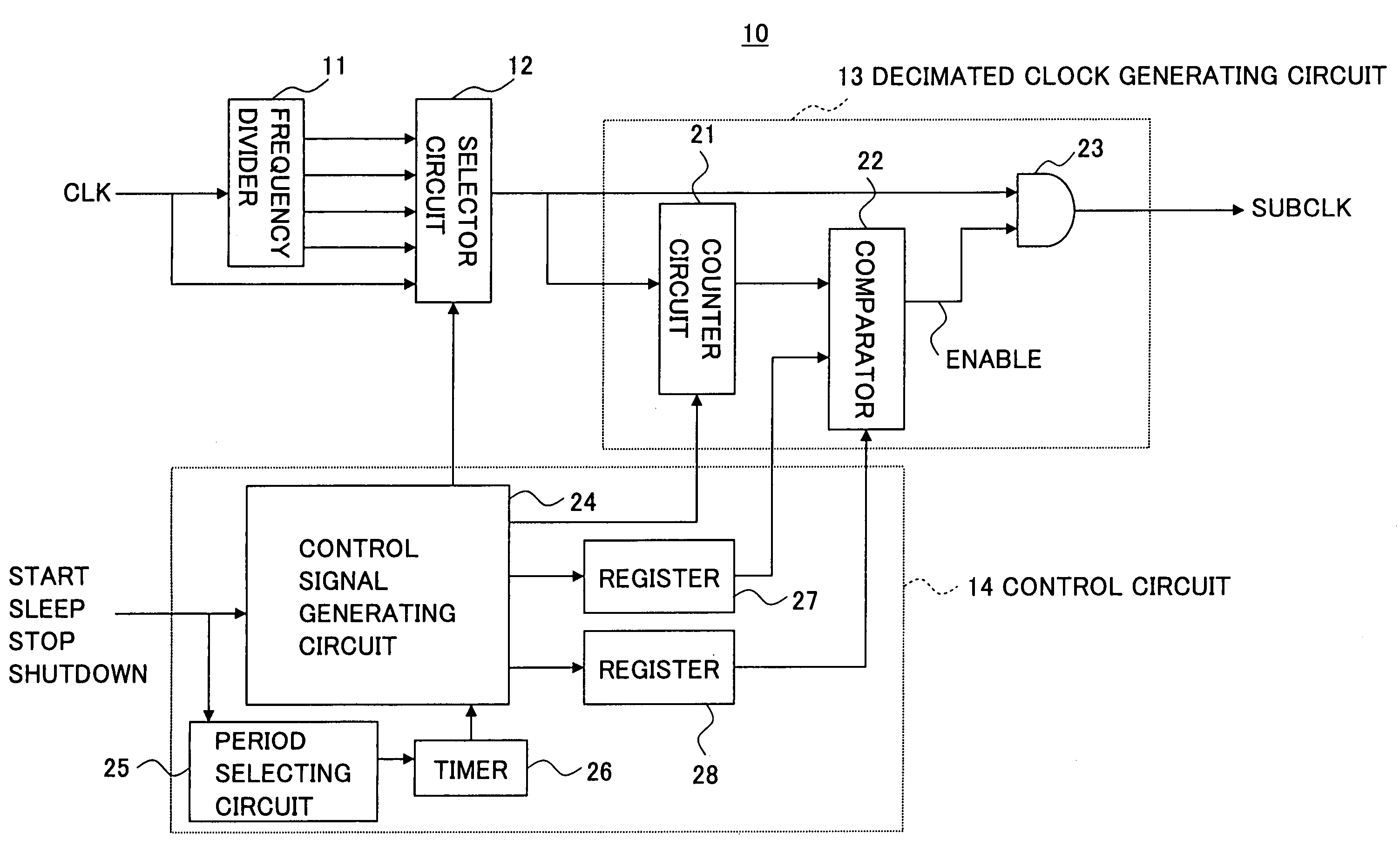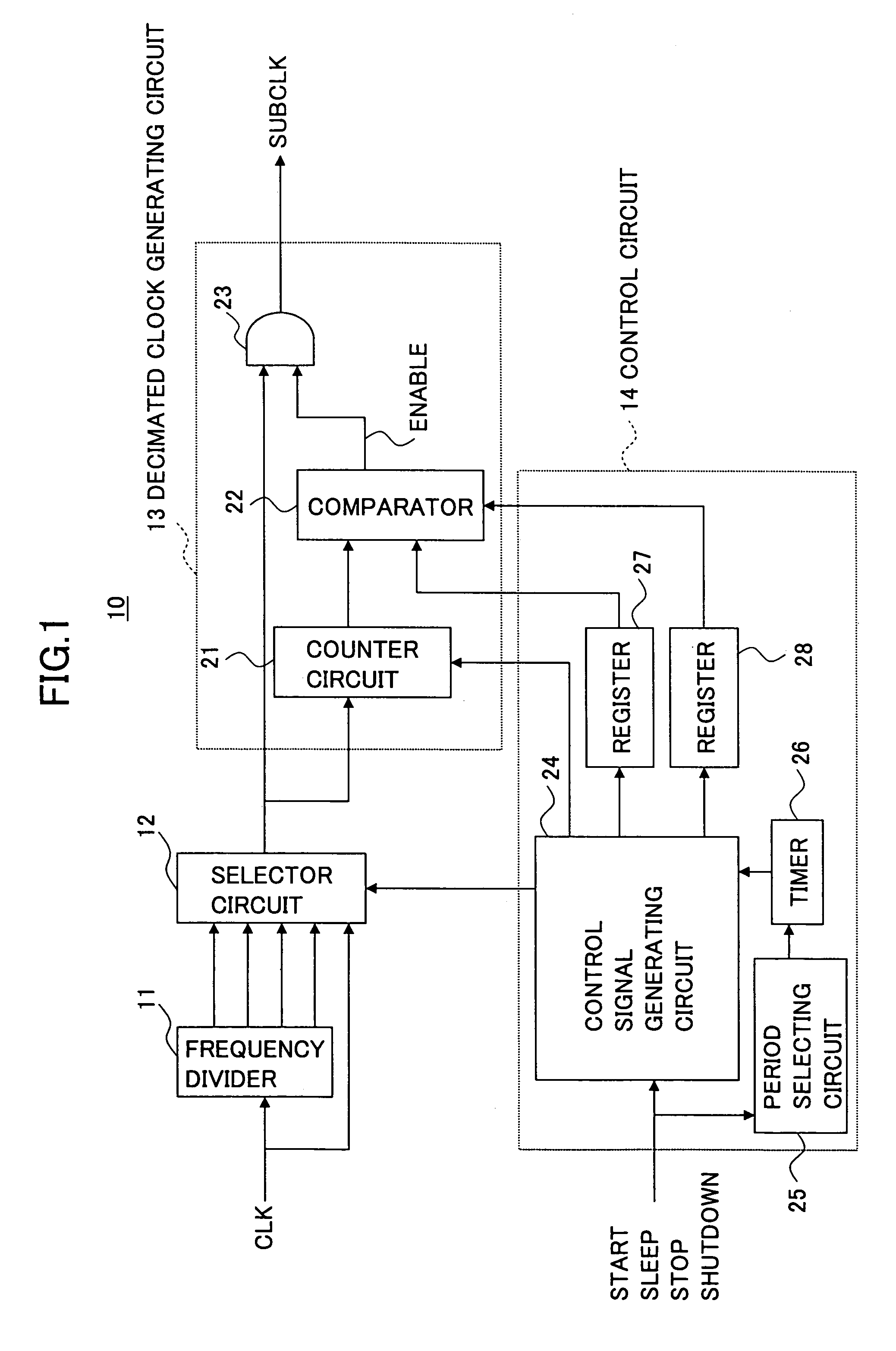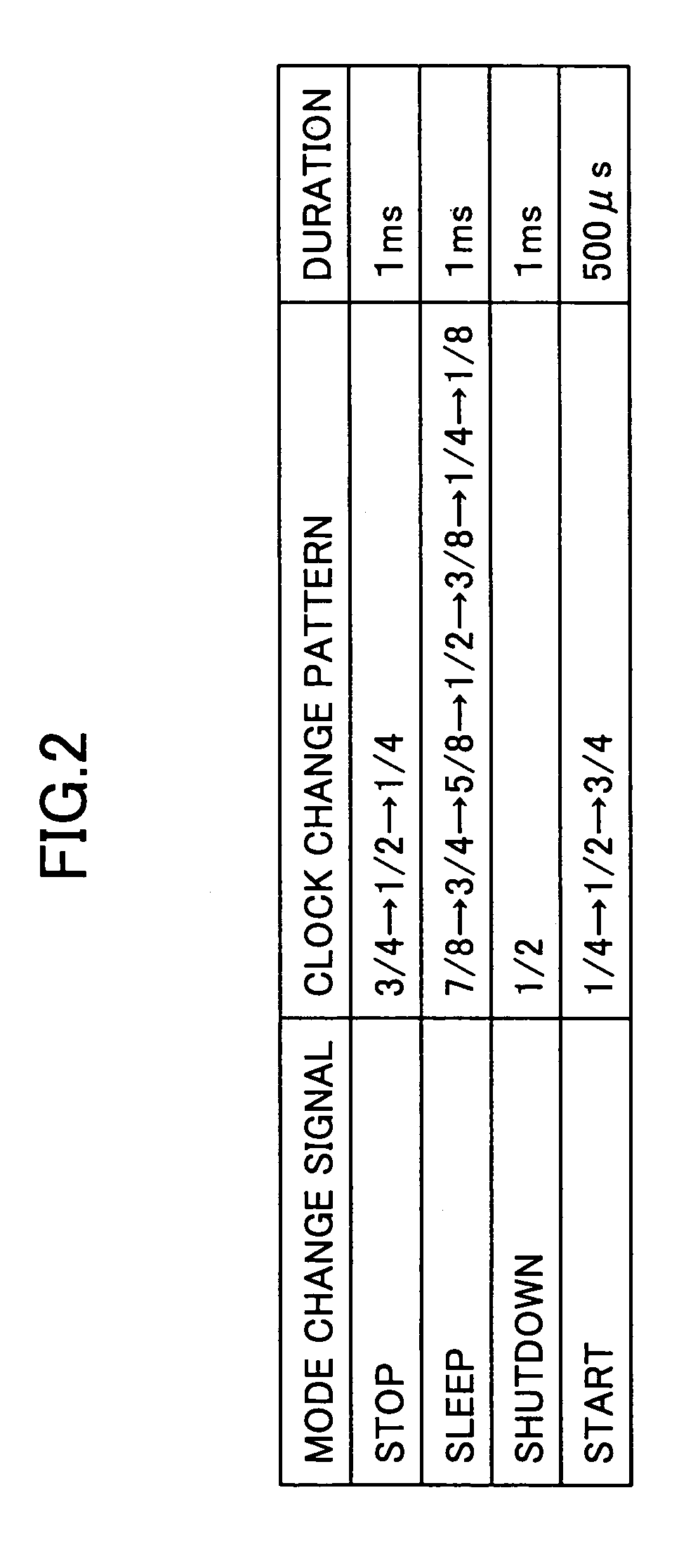Clock shift circuit for gradual frequency change
a technology of clock shift and frequency change, applied in the field of clock shift circuits, can solve the problems of circuitry that uses the clock and generates sudden changes in circuitry that uses the clock and generate abnormal voltages, etc., to prevent the consumption of electric current, reduce and increase the number of clock pulses per unit time.
- Summary
- Abstract
- Description
- Claims
- Application Information
AI Technical Summary
Benefits of technology
Problems solved by technology
Method used
Image
Examples
Embodiment Construction
[0027]The technology disclosed in these patent documents only teaches a clock generating circuit with the function to switch clock frequencies. There is no mention of a construction by which a clock is gradually speeded up or gradually speeded down in response to the switching of operation modes. There is a related-art technology that controls the speeding-up operation of a clock by use of software. This technology has a drawback in that high speed operation cannot be attained, and also has shortcomings in that a clock having a frequency between 1 / n and 1 / (n+1) cannot be generated.
[0028]Accordingly, there is a need for a clock shift circuit that can change a clock frequency gradually in response to a change of operation modes.
[0029]It is a general object of the present invention to provide a clock shift circuit that substantially obviates one or more problems caused by the limitations and disadvantages of the related art.
[0030]In the following, embodiments of the present invention w...
PUM
 Login to View More
Login to View More Abstract
Description
Claims
Application Information
 Login to View More
Login to View More - R&D
- Intellectual Property
- Life Sciences
- Materials
- Tech Scout
- Unparalleled Data Quality
- Higher Quality Content
- 60% Fewer Hallucinations
Browse by: Latest US Patents, China's latest patents, Technical Efficacy Thesaurus, Application Domain, Technology Topic, Popular Technical Reports.
© 2025 PatSnap. All rights reserved.Legal|Privacy policy|Modern Slavery Act Transparency Statement|Sitemap|About US| Contact US: help@patsnap.com



